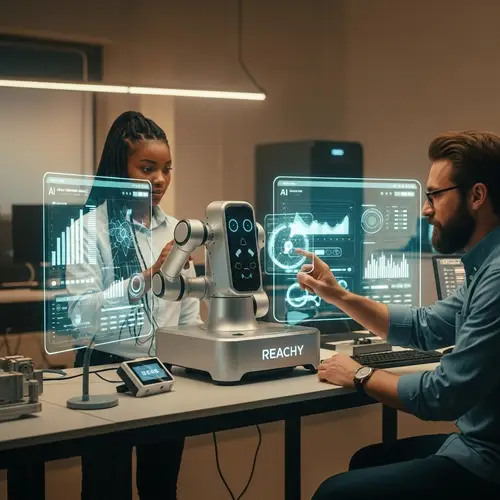Sakana AI Unveils Multi-LLM Approach to Boost AI Performance and Problem Solving

AI models have gotten smarter, but still hit roadblocks when facing complex or nuanced problems. That’s where Sakana AI steps in. Their latest announcement? A novel multi-LLM AI collaboration strategy that turns solo models into a team of thinkers—quite literally.
Instead of relying on just one large language model (LLM) for answers, Sakana AI’s system uses multiple LLMs working together, each model bringing its own strengths. Think of it as a panel of AI minds debating in real-time to reach the best decisions.
It’s an ambitious leap forward, one that could change how AI tackles everything from enterprise queries to scientific discovery—to say the least.
What Precisely Sets Sakana AI Apart from the Swarm?

In a world buzzing with AI innovation, Sakana AI’s approach isn’t just different—it’s strategic. Their team, known for drawing inspiration from biology and nature, leans into collective intelligence. Their latest solution borrows from swarm behavior, but replaces insects with interconnected LLMs.
At the center of this approach is the Sakana AI multi-LLM AB-MCTS framework. Short for Adaptive Bandit Monte Carlo Tree Search, this framework coordinates multiple LLMs to solve problems collaboratively and efficiently.
How the Multi-LLM Collaboration Strategy Works

Think of it like a hive mind. Each LLM suggests potential solutions. The best suggestions get chosen dynamically based on performance, context, and desired outcomes. It’s not just about voting—it’s about adaptive coordination.
Using their AB-MCTS framework, Sakana AI assigns weights (like performance scores) to each model’s output. Then the framework explores different reasoning paths using Monte Carlo search strategies—intelligently pruning less useful options.
This type of multi-LLM AI inference-time scaling technique means better results, faster inference, and smarter routing of questions to the most capable model. Like asking the math genius in a team to handle the equations, while the linguist deals with prose.
Why Single-Model Systems Are No Longer Enough
One-size-fits-all LLMs often struggle with domain-specific reasoning. They can lack nuance in contexts like legal analysis, scientific literature, or customer support.
Enter multi-LLM systems. Unlike a monolith, this method dials in the specialization. One LLM might be tuned for summarization, another for analogy-making—or even task planning. Their individual outputs get compared, combined, or refined until the best answer emerges.
It’s like turning a Swiss Army knife into a specialist toolbox.
Modular, Efficient, Scalable
The beauty of Sakana’s design is modularity. New models can be slotted in without dismantling the architecture. Got an LLM fine-tuned for finance or biotech? Plug it in and let the AB-MCTS framework decide where and when to use it.
Efficiency is also front and center. Thanks to dynamic routing, the system avoids overloading weaker models. Only relevant models run per query. This minimizes computation cost while maximizing impact.
We can’t ignore the scalability potential either. This isn’t just a lab demo—it’s being built with real enterprise applications of multi-LLM AI in mind.
Enterprise Use Cases

Okay, so what does this mean for business users?
Customer Support Automation: Route complex customer queries to multiple LLMs, each trained on company-specific domains like billing, tech troubleshooting, or logistics. This results in faster, more accurate responses.
Legal Document Analysis: One LLM extracts clauses, another summarizes issues, and yet another flags red flags for compliance. Together, they form a collective AI paralegal.
Market Intelligence: Models collaborate to comb through global news, filter false positives, and generate insights tailored to a brand’s needs. Perfect for investor relations, PR, or strategic planning.
Scientific Discovery: In pharmaceuticals or materials science, LLMs parse dense literature and suggest novel hypotheses. Cross-model validation catches errors and refines results.
Internal Knowledge Management: Instead of a bulky search engine, imagine a smart assistant switching between expert LLMs to answer questions precisely and contextually.
Advantages Over Traditional AI Architectures

Yes, GPT-4 and Claude are impressive soloists. But they still stumble. Can one model master code, poetry, tax law, and pizza recipes equally well?
Sakana’s model-ensemble method uses multi-LLM AI for complex problem solving. Strengths amplify, weaknesses diminish. Combine this with inference-time routing, and you’ve got a robust system that adjusts minute-to-minute.
Also worth noting—multi-model setups are more flexible for compliance. Enterprises can fine-tune certain models for regional regulations while others handle general queries, ensuring both performance and security.
FAQ: Multi-LLM AI with Sakana
The Sakana AI multi-LLM AB-MCTS framework uses adaptive routing, performance scoring, and tree-search algorithms to coordinate multiple AI models in real time. It helps pick the best model(s) for each part of a task.
Instead of getting just one try from a single model, the system compares outputs from several models – like A/B testing on steroids. It enhances answer quality and reasoning depth.
Yes. Sakana’s strategy is modular. Enterprises can slot in proprietary models, define their strengths, and let the system optimize usage alongside general-purpose LLMs.
Faster response times, domain-specific accuracy, compliance flexibility, and reduced inference costs. Global businesses can adapt by region, department, and use case.
Traditional ensemble methods combine outputs statically. Sakana’s approach is dynamic—it uses real-time decision trees and learning scores to coordinate responses much more intelligently.
Conclusion: Rethinking the Way AI Thinks

With this multi-LLM collaboration strategy, Sakana AI goes beyond building better models—they’re building better minds. The system is adaptive, cooperative, and purpose-built for modern complexity.
This isn’t just about getting smarter answers. It’s about building cooperative intelligence that can scale, specialize, and grow within your business ecosystem.
Ready to see what a team of AI brains can solve in your enterprise? Investigate Sakana AI’s platform and explore where multi-LLM collaboration can take you.




